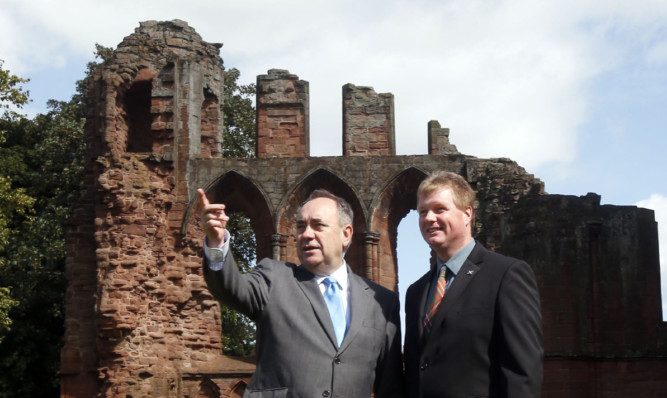The First Minister’s visit to Arbroath Abbey during the last Cabinet meeting before the referendum has been described as a “party political stunt”.
Alex Salmond held interviews and posed for photographs within the landmark’s walls during a crunch meeting on August 18.
Scottish Conservative MSP Alex Johnstone has written to owner Historic Scotland, seeking clarity on its rules over allowing politics within the walls of its properties.
The heritage body said Mr Salmond’s photo shoot was “in line with guidelines” and similar to previous visits by Scottish ministers on government business.
But Mr Johnstone believes the visit was engineered to benefit from the stirring backdrop of Arbroath’s 12th Century abbey, ahead of the all-important day when Scotland goes to the polls on September 18.
He said: “It seems to me this was very much a party political stunt by the First Minister, rather than a government announcement or event, and consequently, such a politically sensitive historic site should not have been commandeered for this purpose.
“Sadly, this is not the first time he has sought to use Arbroath Abbey as a political crutch but it should be the last.
“Historic Scotland have always been justifiably cautious about the use of Arbroath Abbey for any kind of event, and I have to wonder why they allowed this to proceed.”
A Historic Scotland spokesman said: “The First Minister visited Arbroath Abbey last week on government business during the Cabinet’s visit to Arbroath.
“As a property in the care of Scottish ministers, the abbey, along with other Historic Scotland properties, are on occasion used for government announcements or events.”
Another of its properties, Edinburgh Castle, was used by Scottish ministers Keith Brown and Jim Mather to launch the Armed Forces Commitment paper and the Year of Food and Drink respectively.
And Mr Salmond was at the castle to announce funding for the Ryder Cup in 2012.
Historic Scotland bosses had previously insisted politicians could only hold events outside the abbey on public land.
Mr Johnstone added: “That’s completely understandable, given the nature and sensitivity of the site in relation to Scottish politics.”
